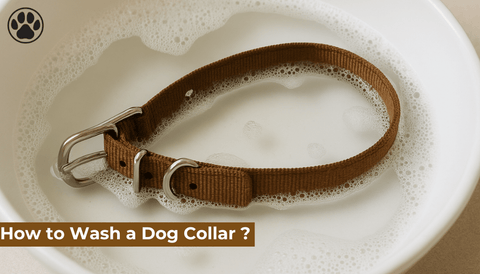
Why Do Dogs Scratch the Carpet?
of reading - words
If you’ve noticed your dog scratching at the carpet, you’re not alone. This behavior can be puzzling, especially if there doesn’t seem to be an apparent reason for it. While it might seem like your dog is trying to ruin your home decor, scratching the carpet is often a natural instinct or a way of communicating something. Understanding why dogs scratch the carpet can help you address the behavior effectively and maintain harmony in your home.
Common Reasons Why Dogs Scratch the Carpet
Dogs scratch carpets for various reasons, ranging from instinctual behaviors to underlying health or emotional issues. Here are the most common explanations:
1. Instinctual Digging Behavior
Scratching is a natural instinct for dogs, rooted in their evolutionary history. In the wild, dogs would dig to create a comfortable sleeping area or to uncover food or water. Even though domestic dogs don’t need to dig for survival, the instinct remains.
2. Marking Territory
Dogs have scent glands in their paws. When they scratch the carpet, they may be trying to mark their territory by leaving their scent behind. This behavior is more common in dogs that feel the need to assert their presence or feel insecure in their environment.
3. Seeking Comfort
Sometimes, dogs scratch the carpet to create a cozy resting spot. They may be trying to rearrange the area to make it more comfortable, much like fluffing a pillow or arranging bedding.
4. Anxiety or Stress
Carpet scratching can be a sign of anxiety or stress. Changes in the home, loud noises, or separation anxiety can trigger this behavior. Scratching provides a way for dogs to self-soothe and release pent-up energy or tension.
5. Boredom
Dogs with excess energy or insufficient mental stimulation may resort to scratching as a way to entertain themselves. Boredom-induced behaviors are often more frequent in high-energy breeds or dogs left alone for extended periods.
6. Attention-Seeking
If your dog notices that scratching the carpet gets your attention—even if it’s negative attention—they may repeat the behavior as a way to engage with you.
7. Investigating Scents
Carpets can trap a variety of scents, including food crumbs, dirt, or the odor of other pets. Dogs may scratch to investigate or uncover the source of an intriguing smell.
8. Health Issues
In some cases, scratching behavior can be linked to health problems such as:
-
Allergies: Skin irritation or itchiness caused by allergies can lead to excessive scratching.
-
Parasites: Fleas or mites may cause discomfort, prompting dogs to scratch surfaces.
-
Compulsive Behaviors: Certain medical conditions or neurological disorders can result in obsessive scratching.
How to Address Carpet Scratching
If your dog’s carpet scratching becomes problematic, there are several strategies you can use to address the behavior:
1. Identify the Trigger
Observe when and where your dog scratches the carpet. Identifying triggers, such as specific times of day, environmental changes, or stressors, can help you address the root cause.
2. Provide an Alternative
Offer your dog an appropriate outlet for their scratching behavior, such as:
-
A designated digging area in the yard
-
A scratching mat or blanket
-
A comfortable bed with soft materials they can “arrange”
3. Increase Mental and Physical Stimulation
Ensure your dog gets enough exercise and mental enrichment to reduce boredom. Activities like daily walks, interactive toys, and training sessions can help burn off excess energy.
4. Create a Calming Environment
If anxiety is the root cause, consider steps to reduce stress, such as:
-
Using calming pheromone diffusers
-
Establishing a consistent routine
-
Providing a safe space for your dog to retreat to when feeling anxious
5. Address Medical Issues
If you suspect allergies, parasites, or other health problems, consult your veterinarian. Treating the underlying condition can often resolve the scratching behavior.
6. Avoid Reinforcing the Behavior
Avoid reacting strongly to carpet scratching, as this may inadvertently encourage the behavior. Instead, redirect your dog’s attention to an acceptable activity and reward them for positive behavior.
Preventing Carpet Scratching
Taking proactive measures can help prevent your dog from scratching the carpet:
-
Regular Grooming: Keep your dog’s nails trimmed to minimize damage to carpets.
-
Clean Your Carpet: Regularly vacuum to remove scents and residues that may attract your dog.
-
Provide a Comfortable Resting Spot: Ensure your dog has a cozy and inviting place to rest.
-
Engage Your Dog: Maintain a consistent routine of exercise, play, and training to keep your dog physically and mentally satisfied.
When to Seek Professional Help
If your dog’s carpet scratching becomes excessive, destructive, or is accompanied by other concerning behaviors, consider seeking professional guidance. A veterinarian can rule out medical issues, while a certified dog trainer or behaviorist can provide tailored strategies for managing the behavior.
Frequently Asked Questions (FAQ)
1. Why does my dog scratch the carpet before lying down? This behavior is instinctual and stems from their wild ancestors, who would scratch or dig to create a comfortable sleeping area.
2. Can carpet scratching be a sign of anxiety? Yes, dogs may scratch carpets as a way to cope with stress or anxiety. Identifying and addressing the source of their stress can help.
3. How can I stop my dog from scratching the carpet? Provide alternatives, such as scratching mats or digging areas, and ensure your dog gets plenty of exercise and mental stimulation. Redirect their attention when they scratch the carpet and reward positive behaviors.
4. Is it normal for puppies to scratch the carpet? Yes, puppies often scratch carpets out of curiosity or as part of their natural behavior. Providing appropriate outlets for scratching can help redirect this behavior.
5. Should I punish my dog for scratching the carpet? No, punishment is not recommended as it can increase anxiety and confusion. Instead, use positive reinforcement to encourage desired behaviors and address the underlying cause.




